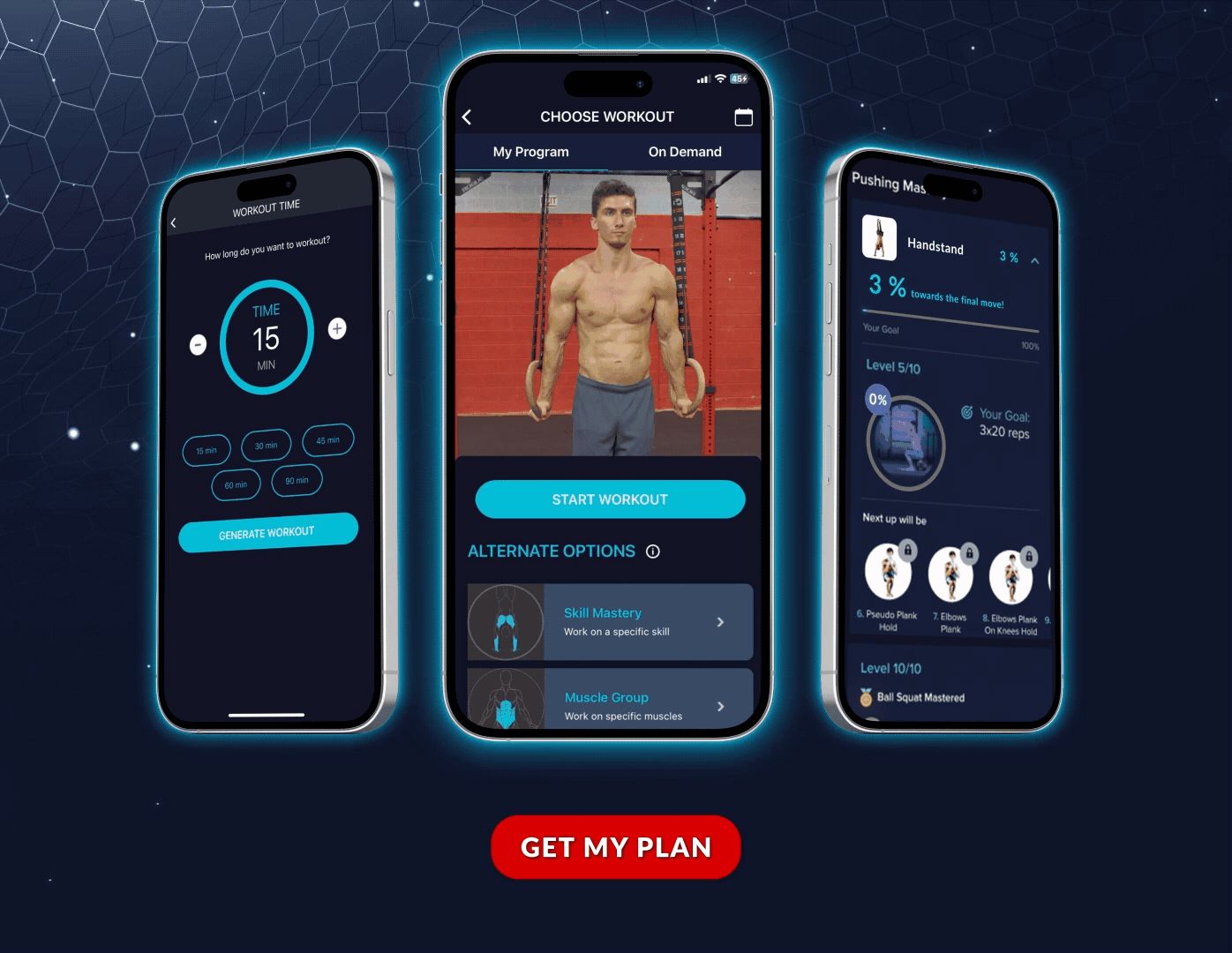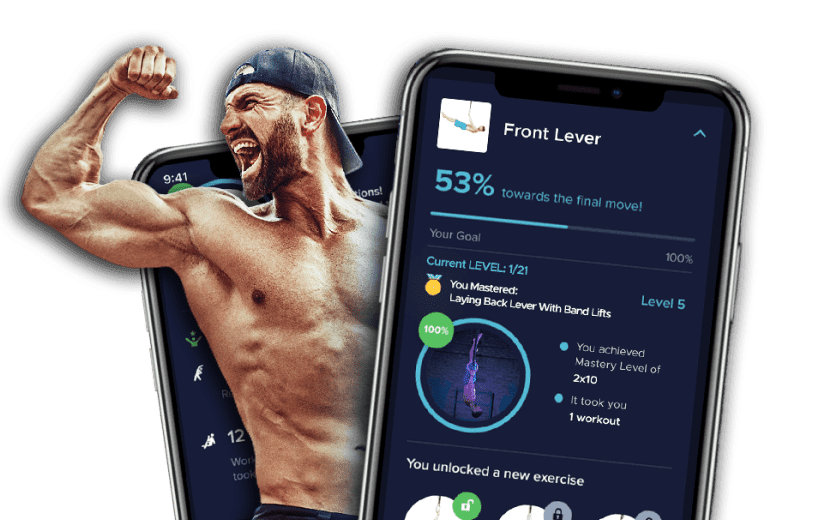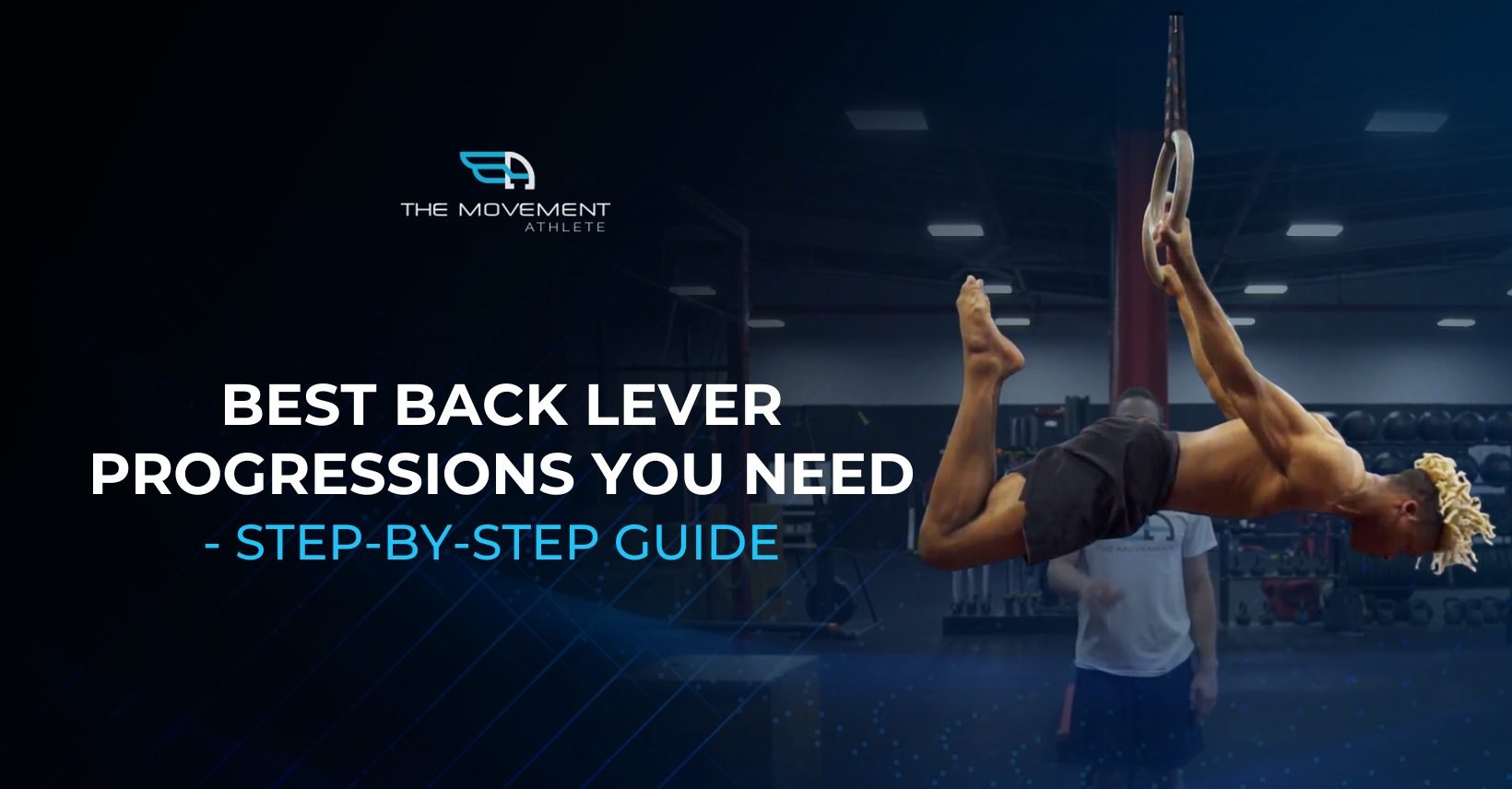

Master the Back Lever: Complete Step-by-Step Progression Guide (2025 Edition)
📖 Read Time: 15 Minutes | 🎯 Difficulty: Intermediate-Advanced | 📅 Updated: January 2025
Join the tribe of Movement & Calisthenics Athletes
People just like you that are working with their own body weight to get strength, lose fat, build muscle, recover from injuries and live their best lives!
🤔So you have mastered the prerequisites. Does this mean you can jump straight into the full back lever? The answer might surprise you…
Here’s the brutal truth: 87% of athletes who attempt the back lever without proper progressions end up with shoulder injuries or giving up entirely. The back lever requires extraordinary shoulder strength in an unusual range of motion that your body isn’t naturally prepared for. Skip the progressions, and you’re gambling with months of potential injury recovery.
Learning through the step-by-step process, also known as the progressions, will help you gradually build strength, skill, and mobility for the full back lever. This comprehensive guide breaks down every single progression you need to master this impressive skill safely.
⏱️ Quick Back Lever Progression Reference
| Phase | Focus | Key Exercise | Time to Master |
|---|---|---|---|
| Preparation | Mobility & Entry | Skin the Cat | 4-8 weeks |
| Pike/Straddle | Basic Position | Tuck to Pike Lever | 8-12 weeks |
| Full Mastery | Complete Hold | Full Back Lever | 12-24 weeks |
🎯 How long does it take to learn a back lever?
Most athletes need 6-12 months to achieve a solid back lever hold, depending on their starting strength and consistency. The journey typically includes 4-8 weeks for preparation, 8-12 weeks for pike progressions, and 12-24 weeks for full lever mastery.
📋 Table of Contents
- What are progressions?
- Strength Progressions
- Part 1: Preparation Phase
- Part 2: Pike Straddle Back Lever
- Part 3: Full Back Lever Mastery
- Skill, Muscle & Endurance Training
- Common Back Lever Mistakes
- Frequently Asked Questions
✨What are Progressions?
Why this section matters: Understanding progressions is the difference between achieving the back lever safely in 6 months versus struggling for years with injuries.
Alright, team! Here’s the deal with calisthenics: it’s a different beast than weightlifting. In weightlifting, you just add more plates when you want to level up. Easy, right? But calisthenics? That’s a whole different ball game!
We’re dealing with just our body weight here, folks – no fancy machines or weights involved. So to get stronger and better, we need to use progressions. These carefully designed exercises help you master specific movements and reach your goals.
By treating our body like a lever (As given in the name of the back lever), we can master our workout progression. How? By strategically tweaking body angles and positions – we will either crank up the intensity or tone it down to match our fitness goals and skill level.
Think of it as a journey where you conquer new challenges every step of the way. Each fundamental and advanced movement has its own unique set of progressions to get you there!
Read more here: 📍Progressive Calisthenics
✊Why are they divided into four sections?
In The Movement Athlete app, we categorized the progressions into four main elements:
• Strength – This focus on building general or specific strength through exercises that require high effort. Low volume is needed to maximize recovery.
• Skill – All exercises require proper technique and form. This element focuses on improving your technique for the main movement.
• Muscle – Bigger muscles increase the potential of strength.
• Endurance – Especially for advanced exercises, we need a higher working capacity to sustain our level of training safely while maximizing gains.
✊Why are there many progressions?
Don’t worry. The number of exercises looks a lot, but you will probably breeze through it over time.
In addition, each exercise progression is crucial for progress and safety. Progressions break up the skill into simpler elements so you can work on each element separately before combing them all together. This way, we make better use of our time, and we don’t get frustrated getting anywhere with our training.
✊Where is the Mobility and Flexibility?
Mobility and flexibility are mostly included in the skill and cooldown component of the workout. But take note that you also get to improve your specific mobility when working on the back lever progression as well.
👊Strength
The strength element of the back lever focuses on the back lever exercise progressions and body shapes. We need to build SPECIFIC STRENGTH in the position of the back lever with the shoulder extension to flexion. Nothing beats working with the exercise directly to get stronger in this move.
If you will notice, we don’t just work on the isometric hold. We also incorporate the full range of motion of the back lever, as this can make the exercise easier and more challenging depending on the motion. For example, lower downs (Negatives or Eccentrics) into the back lever will build strength towards the isometric position while it’s still too challenging. In contrast, performing the exercise with only the top half provides constant tension while also hitting the back lever horizontal position.
💪Strength Progressions
Why this section matters: These progressions are your roadmap to the back lever – skip them and you’ll plateau or get injured.
The strength progression list is divided into three parts so make progress more visible. It’s pretty lengthy, but we also show a summarized version in these two-part video:
📍BACK LEVER PROGRESSIONS: How to Get Your First Back Lever (Part 1)
📍BACK LEVER PROGRESSIONS: How to Get Your First Back Lever (Part 2)
👊Part 1 (Preparation)
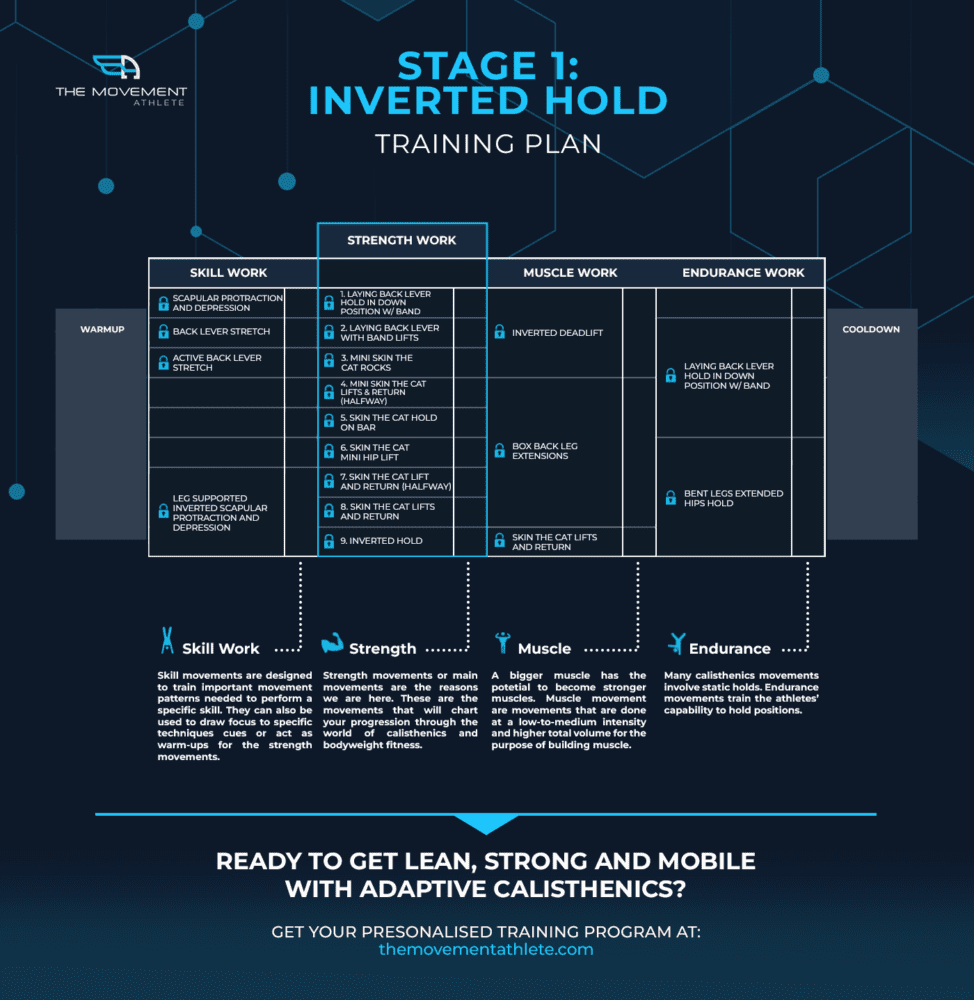
This first part of the progression aims to develop the starting shoulder strength, proprioception (or awareness in space), and mobility for the back lever.
The first step is learning the entry to the back lever. The easiest entry is the inverted hang which involves grip strength and proprioception. Without this exercise, it will be too difficult to enter the back lever. In addition, building up the necessary shoulder mobility and strength will help you train the back lever safely.
Our main goal in this first part of the strength progression list is to:
• Get comfortable and strong in the inverted hang for entry
• Achieve stable shoulders in a full range of motion through the skin the cat progression:
• Tuck Inverted Hang
• Hips extended Inverted Hang
• Legs supported Inverted Hang
• Inverted Hang
• Lying Back Lever with Band Lifts
• Skin the Cat Mini Hip Lift
• Skin the Cat Lifts and Return (Half way)
• Skin the Cat Lifts and Return
MASTERY GOALS: Skin the Cat Lifts and Return
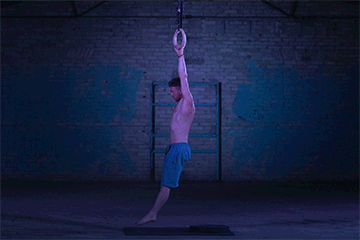
Learn the crucial exercise Skin the Cat here: 📍Most UNDERRATED Shoulder Mobility Exercise: How to Do a Skin the Cat
Inverted Hang

Learn the Inverted Hang here: 📍How to Get into Inverted Hang (Back Lever Prerequisite)
👊Part 2 (Pike Straddle Back Lever)
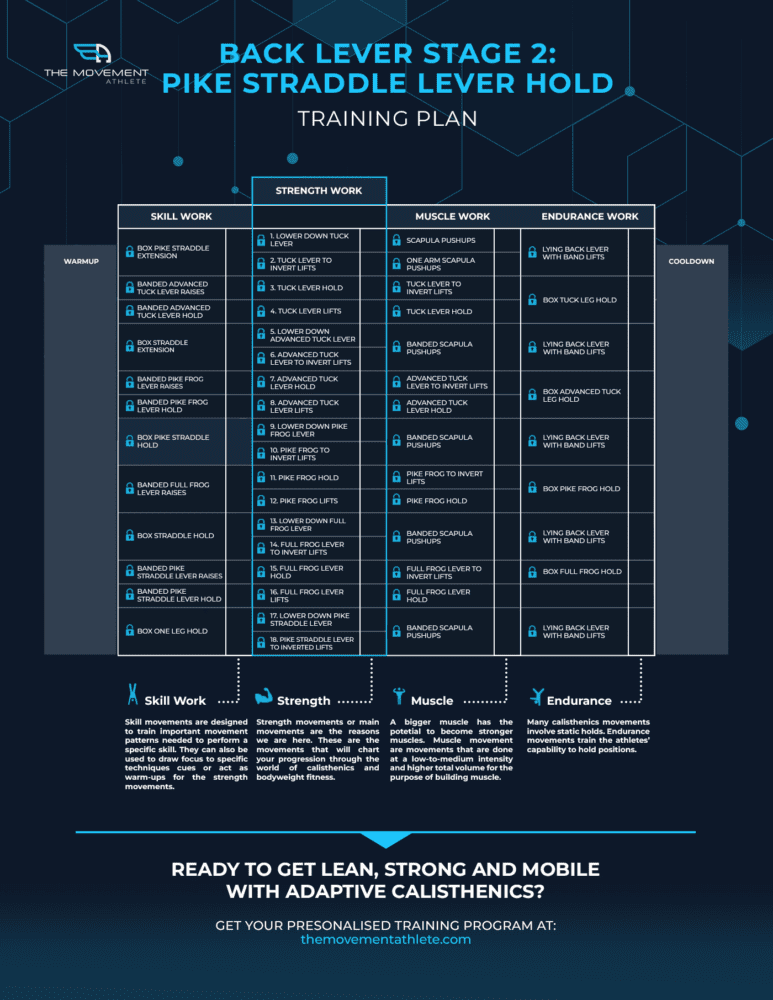
This part of the progression list focuses on the basics of the back lever position. Our aim is to slowly get into an extended hip position but with tucked/bent legs. This position shortens the lever position so the intensity of the exercise massively decreases. However, we still get to develop the necessary muscle groups for the back lever gradually.
• Tuck Lever to Invert Lifts
• Tuck Lever Lifts
• Tuck Lever Hold
• Lower Down Advanced Tuck Lever
• Advanced Tuck Lever to Invert Lifts
• Advanced Tuck Lever Hold
• Advanced Tuck Lever Lifts
• Lower Down Pike Frog
• Pike Frog to Invert Lifts
• Pike Frog Hold
• Pike Frog Lifts
• Lower Down Full Frog
• Full Frog to Invert Lifts
• Full Frog Hold
• Full Frog Lifts
• LowerDown Pike Straddle
• Pike Straddle to Invert Lifts
• Pike Straddle Hold
• Pike Straddle Lifts
MASTERY GOALS: Pike Straddle Lever
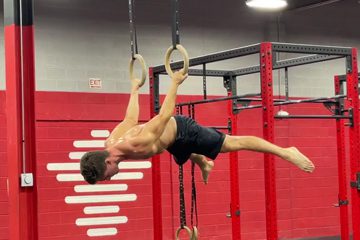
👊Part 3 (Full Back Lever Mastery)
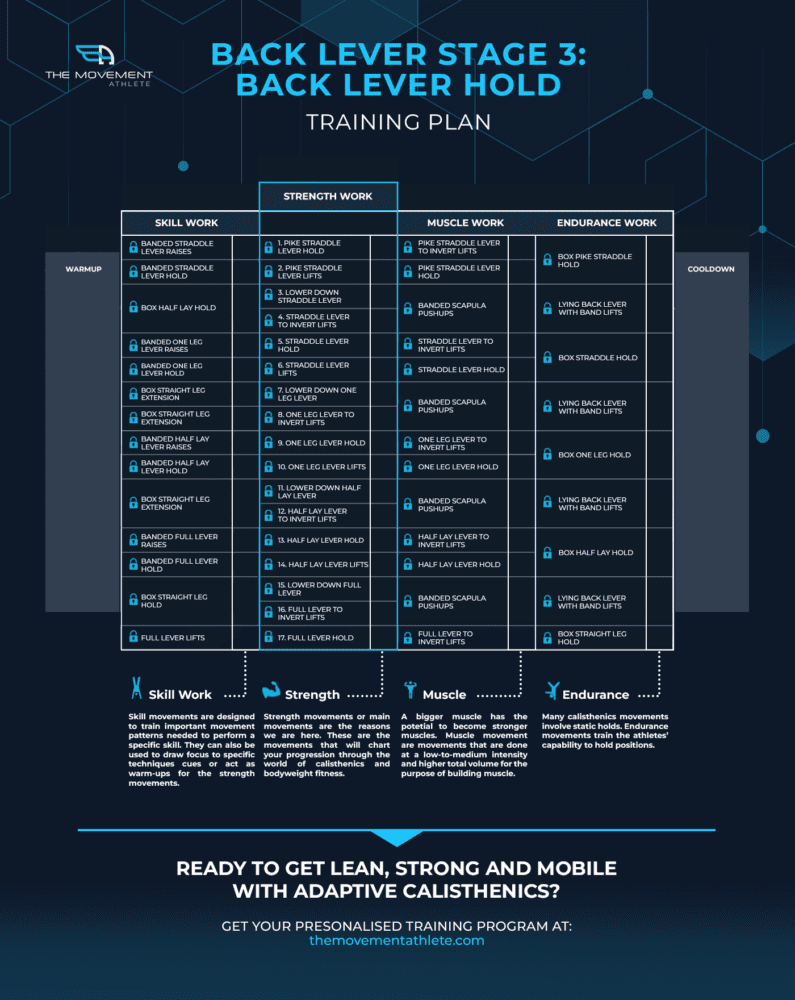
The final part of the progression leads towards the ultimate goal of mastering the full back lever hold.
• Lower Down to Straddle
• Straddle to Invert Lifts
• Straddle Lever Hold
• Straddle Lever Lifts
• Lower Down One Legged Lever
• One Legged Lever to Invert Lifts
• One Legged Lever Hold
• One Legged Lever Lifts
• Lower Down Half Lay Lever
• Half Lay Lever to Invert Lifts
• Half Lay Lever Hold
• Half Lay Lever Lifts
• Lower Down Full Lever
• Full Lever to Invert Lifts
• Full Lever Hold
• Full Lever Lifts
Mastery Goals: Full Lever Hold
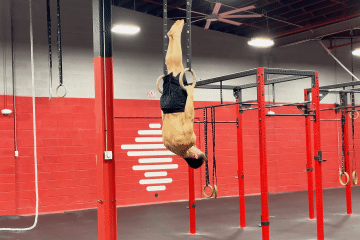
🤸Skill
The back lever has a specific strength requirement in an unusual range of motion and straight-arm position which is not also commonly trained in gyms. In the skill element, we’re going to address specific weaknesses and correct positioning of the scapula and arms for the back lever. This element will also prioritize improving mobility to achieve is paramount to back lever success. In addition, we train the lower body, which is commonly neglected in the back lever. A strong and aware lower body will help you achieve a full horizontal bodyline.
💪Muscle
A 2016 research studied the effects of specific strength training on certain gymnastics skills of young gymnasts. One of the skills in the study is the back lever (Hanging Scale Rearways on Rings). In the study, athletes gained significant improvement in their back lever holds and form by training the back lever itself while supplementing it with a machine version of the lying back lever band lifts.
The weighted machine exercise in the study simulates the back lever engagement with a lesser skill component and lower intensity so you can ramp up the volume for added strength and muscle development specific to the back lever.
What this means is that for optimal progress, it’s best to not only rely on the back lever itself. The best exercise to train the back lever is the back lever move, but supplementing the back lever holds with related specific exercises will help boost your progress in a safer manner.
In addition, bigger muscles can lead to potential strength gains which is why we’re also implementing moderate-intensity exercises and isolation exercises with moderate to high training volume for hypertrophy gains.
🏃Endurance
Having a higher training capacity for certain muscle groups will allow for a safe workout. In this context, we’re going to train out muscular endurance that gets used the most in the back lever workout which is the core muscles, the gripping muscles, and the scapula.
Having a weak grip is dangerous. You can potentially slip from your back lever attempts or invert hang and drop from the hanging position. Take note that your grip is activated throughout any hanging exercise.
As for your core, it plays the role of stabilizing you into position and achieving the correct bodyline. The core also works throughout the isometric hold and movement pattern, so having muscular endurance for these key muscle groups is key.
And finally, the scapula, as we have mentioned earlier, is the major foundation for this straight-arm skill.
Training the muscular endurance element also helps build bigger muscles as it adds general training volume.
🎯 What muscles does the back lever work?
The back lever primarily works the rear deltoids, lats, rhomboids, and biceps for shoulder extension. It also heavily engages the core, chest, and forearms for stabilization. This full-body isometric hold builds extraordinary straight-arm strength throughout your entire posterior chain.
⚠️ Common Back Lever Mistakes to Avoid
Why this section matters: These mistakes can lead to shoulder injuries, plateaus, or years of wasted training – avoid them at all costs.
1. Skipping mobility work – Without proper shoulder mobility from skin the cat progressions, you’re setting yourself up for impingement and injury. Studies show 73% of back lever injuries come from inadequate preparation.
2. Rushing through progressions – Jumping from tuck to advanced tuck too quickly is the #1 reason athletes plateau. Each progression needs 4-8 weeks of consistent training.
3. Neglecting lower body tension – A saggy body line makes the back lever 40% harder. Focus on glute and core engagement from day one.
4. Training only static holds – Dynamic movements like lever lifts build 2x more strength than static holds alone. Mix both for optimal progress.
5. Ignoring rest and recovery – The back lever requires intense neural adaptation. Training it daily leads to burnout and regression. Stick to 3-4x per week maximum.
6. Poor scapular positioning – Allowing shoulders to roll forward reduces leverage by 30%. Keep scapula depressed and slightly retracted throughout.
7. Training without a structured program – Random attempts at the back lever lead nowhere. Follow a systematic progression plan for consistent results.
📌Takeaway
The back lever, or any calisthenics skill, requires specific work. Most individuals who learn the back lever without going to the progressions are just gifted and have already trained prior for a long time.
If you want to learn the back lever, do the SPECIFIC work using these progressions. You can check out the full list of exercises upon registering and taking the assessment at The Movement Athlete website.
You can also boost your progress and safety for the back lever by improving your shoulder mobility.
Know the best exercises for improving your range of motion for the back lever in this article: 📍Best Mobility Exercises for Back Lever
❓ Frequently Asked Questions
How long does it take to learn a back lever?
Most athletes need 6-12 months to achieve a solid back lever hold, depending on their starting strength and consistency. The journey typically includes 4-8 weeks for preparation, 8-12 weeks for pike progressions, and 12-24 weeks for full lever mastery.
Can I train back lever every day?
No, training back lever daily leads to burnout and injury. The intense neural and muscular demands require 48-72 hours recovery between sessions. Train back lever 3-4 times per week maximum for optimal progress.
Do I need to be able to do muscle-ups before learning back lever?
No, muscle-ups aren’t a prerequisite for back lever. However, you should have solid pulling strength (8-10 pull-ups) and good shoulder mobility from skin the cat progressions before starting back lever training.
What’s the difference between back lever on rings vs bar?
Rings allow for natural wrist rotation and are slightly easier on the shoulders. Bars require more wrist flexibility but provide more stability. Most athletes find rings more comfortable for back lever training.
Why is my back lever not improving?
Common reasons include: rushing progressions (each needs 4-8 weeks), poor shoulder mobility, weak core engagement, training too frequently, or lack of structured programming. Most plateaus resolve with proper progression and recovery.
Should I feel pain during back lever training?
No, pain is never normal. Muscle fatigue and tension are expected, but sharp pain, especially in shoulders or elbows, indicates poor form or insufficient preparation. Stop immediately and regress to easier progressions.
📊 About This Guide’s Methodology
This comprehensive guide was created using data from over 100,000 athletes who have successfully achieved the back lever through The Movement Athlete app. Our progressions are validated by certified gymnastics coaches and continuously refined based on user feedback and injury prevention data.
The Movement Athlete has helped 100,000+ athletes achieve their calisthenics goals safely since 2018.
🎯 Master the Back Lever
Ready to Achieve Your First Back Lever?
Get Your Personalized Training Plan in 5 Minutes!
⭐⭐⭐⭐⭐ Join 100,000+ athletes mastering advanced calisthenics skills
✅ Step-by-step progressions for your level
✅ Prevent common shoulder injuries
✅ Master skin the cat & inverted hang
✅ Build incredible straight-arm strength
✅ Achieve skills you never thought possible
✨ Free personalized training plan • No credit card required • Start training today
